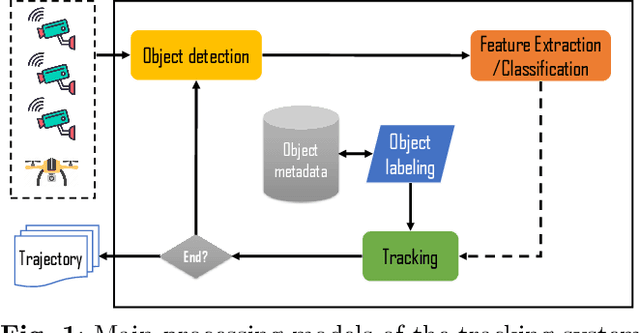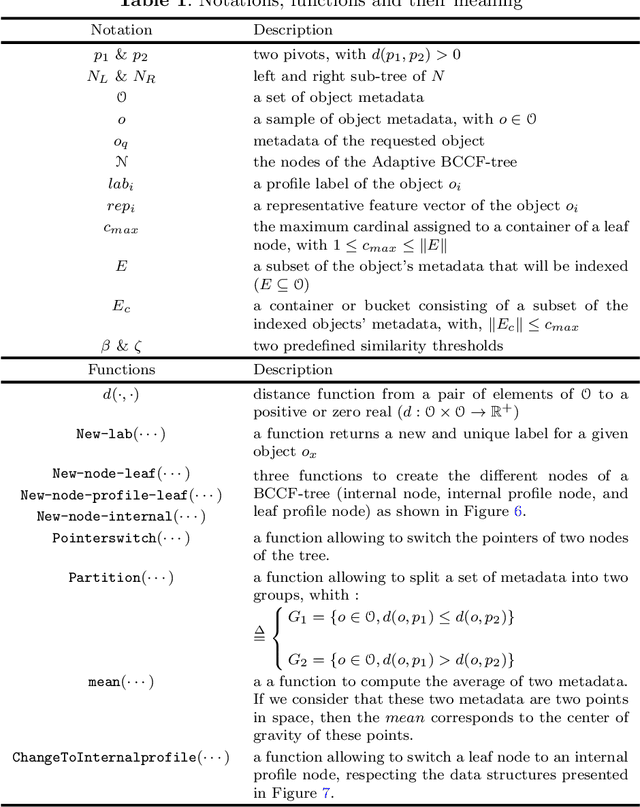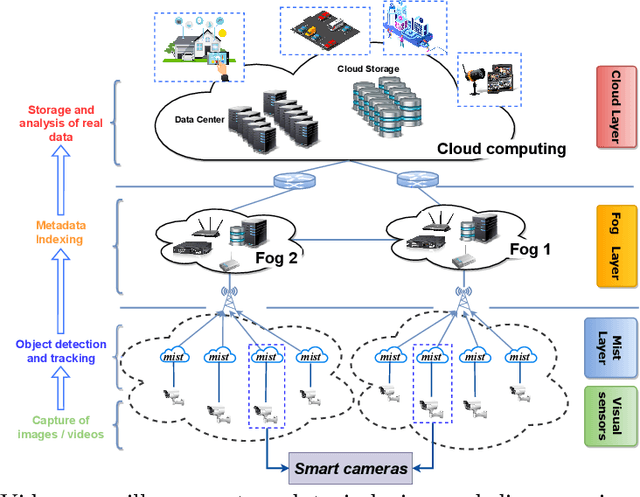Ala-Eddine Benrazek
Efficient $k$-NN Search in IoT Data: Overlap Optimization in Tree-Based Indexing Structures
Aug 28, 2024Abstract:The proliferation of interconnected devices in the Internet of Things (IoT) has led to an exponential increase in data, commonly known as Big IoT Data. Efficient retrieval of this heterogeneous data demands a robust indexing mechanism for effective organization. However, a significant challenge remains: the overlap in data space partitions during index construction. This overlap increases node access during search and retrieval, resulting in higher resource consumption, performance bottlenecks, and impedes system scalability. To address this issue, we propose three innovative heuristics designed to quantify and strategically reduce data space partition overlap. The volume-based method (VBM) offers a detailed assessment by calculating the intersection volume between partitions, providing deeper insights into spatial relationships. The distance-based method (DBM) enhances efficiency by using the distance between partition centers and radii to evaluate overlap, offering a streamlined yet accurate approach. Finally, the object-based method (OBM) provides a practical solution by counting objects across multiple partitions, delivering an intuitive understanding of data space dynamics. Experimental results demonstrate the effectiveness of these methods in reducing search time, underscoring their potential to improve data space partitioning and enhance overall system performance.
Introduction of a tree-based technique for efficient and real-time label retrieval in the object tracking system
May 31, 2022



Abstract:This paper addresses the issue of the real-time tracking quality of moving objects in large-scale video surveillance systems. During the tracking process, the system assigns an identifier or label to each tracked object to distinguish it from other objects. In such a mission, it is essential to keep this identifier for the same objects, whatever the area, the time of their appearance, or the detecting camera. This is to conserve as much information about the tracking object as possible, decrease the number of ID switching (ID-Sw), and increase the quality of object tracking. To accomplish object labeling, a massive amount of data collected by the cameras must be searched to retrieve the most similar (nearest neighbor) object identifier. Although this task is simple, it becomes very complex in large-scale video surveillance networks, where the data becomes very large. In this case, the label retrieval time increases significantly with this increase, which negatively affects the performance of the real-time tracking system. To avoid such problems, we propose a new solution to automatically label multiple objects for efficient real-time tracking using the indexing mechanism. This mechanism organizes the metadata of the objects extracted during the detection and tracking phase in an Adaptive BCCF-tree. The main advantage of this structure is: its ability to index massive metadata generated by multi-cameras, its logarithmic search complexity, which implicitly reduces the search response time, and its quality of research results, which ensure coherent labeling of the tracked objects. The system load is distributed through a new Internet of Video Things infrastructure-based architecture to improve data processing and real-time object tracking performance. The experimental evaluation was conducted on a publicly available dataset generated by multi-camera containing different crowd activities.
 Add to Chrome
Add to Chrome Add to Firefox
Add to Firefox Add to Edge
Add to Edge